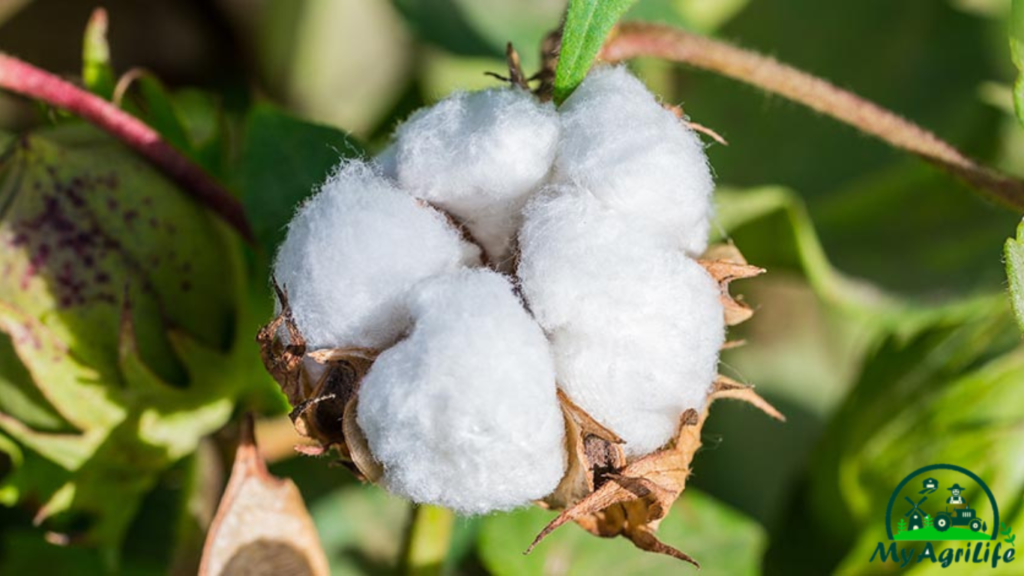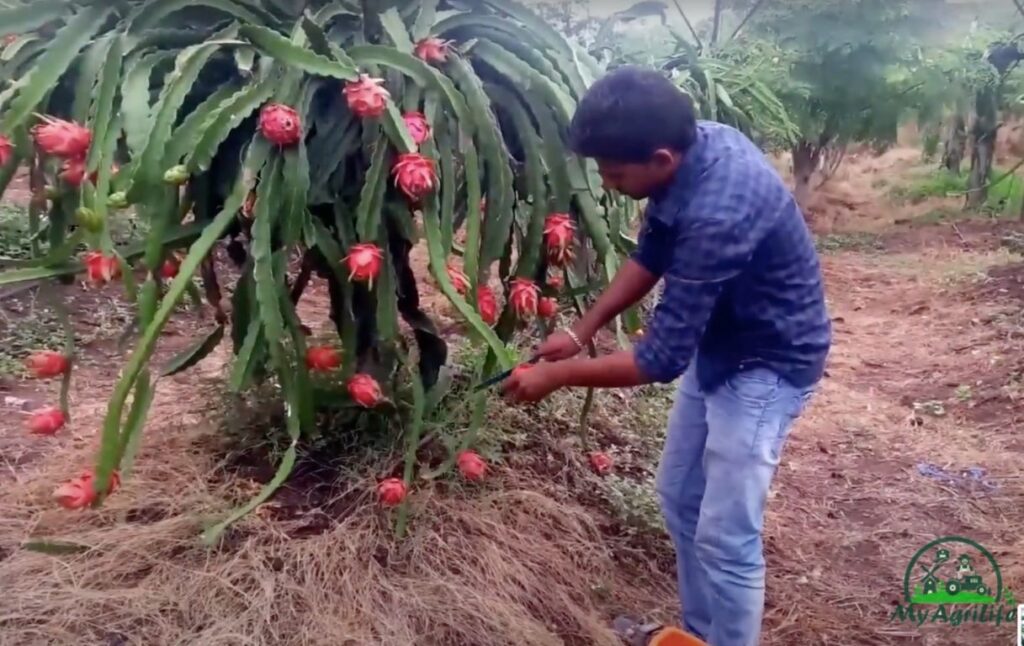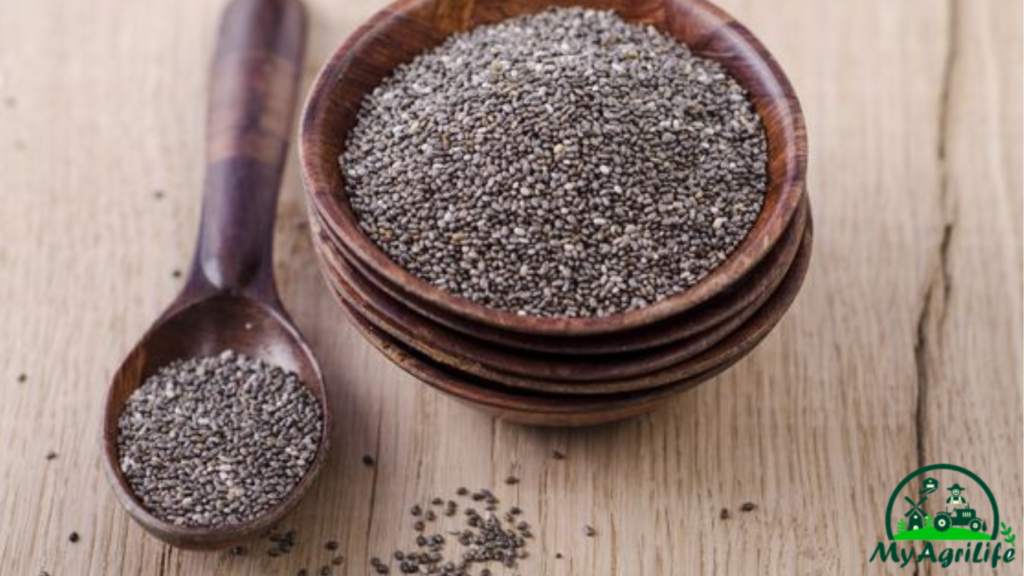
Chia seeds, also known as (chiya seed) in Hindi, are small black or white seeds that come from the Salvia hispanica plant, which is a member of the mint family. Chia seeds were once a staple food of the Aztecs and Mayans, and they have recently gained popularity as a health food.
Chia seeds are rich in fiber, protein, omega-3 fatty acids, and various micronutrients such as calcium, magnesium, and potassium. They are also a good source of antioxidants, which help to protect the body from damage caused by free radicals.
Chia seeds can be added to a variety of foods, such as smoothies, yogurt, oatmeal, and salads, to provide a nutritional boost. They can also be used as a vegan egg substitute in baking, as they absorb liquid and form a gel-like consistency.
It is important to note that while chia seeds are generally considered safe, they can cause digestive issues in some people, especially if consumed in large amounts. It is recommended to start with a small amount and gradually increase intake to see how your body reacts.
Seed Specification Chia Seed
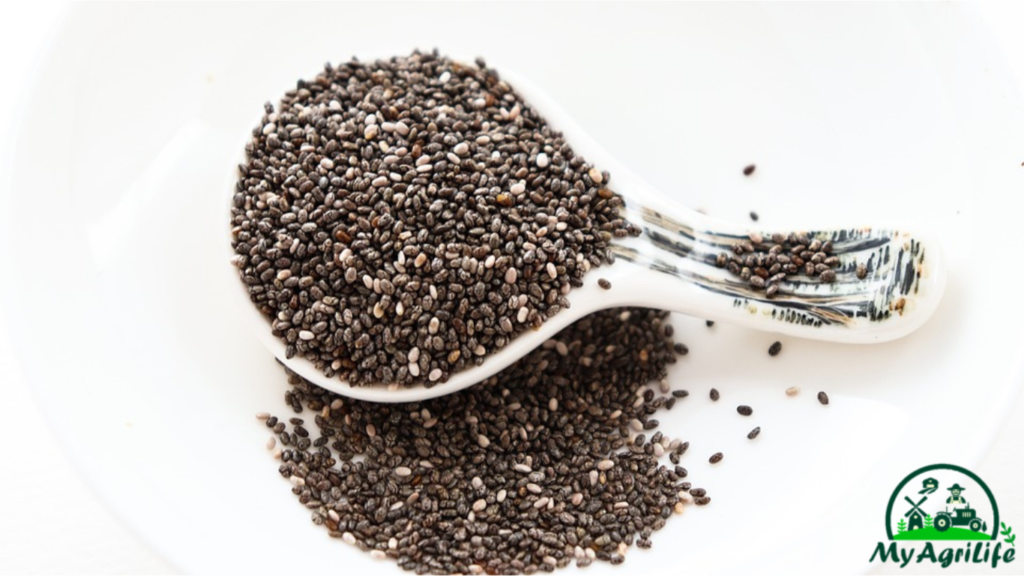
Chia seeds have a small, oval shape, with a diameter of about 1-2 millimeters. They are usually black or white, but can also be brown, gray, or even spotted. The seeds are slightly crunchy and have a nutty flavor.
The nutritional profile of chia seeds can vary depending on the variety, growing conditions, and processing methods. However, in general, chia seeds contain the following nutrients per 1-ounce (28-gram) serving:
1.Calories: 137
2.Protein: 4 grams
3.Fat: 9 grams (including 5 grams of omega-3 fatty acids)
4.Carbohydrates: 12 grams (including 11 grams of fiber)
5.Calcium: 18% of the Recommended Dietary Allowance (RDA)
6.Magnesium: 30% of the RDA
7.Phosphorus: 27% of the RDA
8.Potassium: 5% of the RDA
9.Zinc: 7% of the RDA
Chia seeds are also a good source of antioxidants and various micronutrients, such as vitamin B1, B2, and B3, and iron.
Land Preparation & Soil Health Chia Seed
Chia seeds are generally grown in well-drained, fertile soils with a pH range of 6.0 to 8.0. The land preparation for chia cultivation involves several steps, which are as follows:
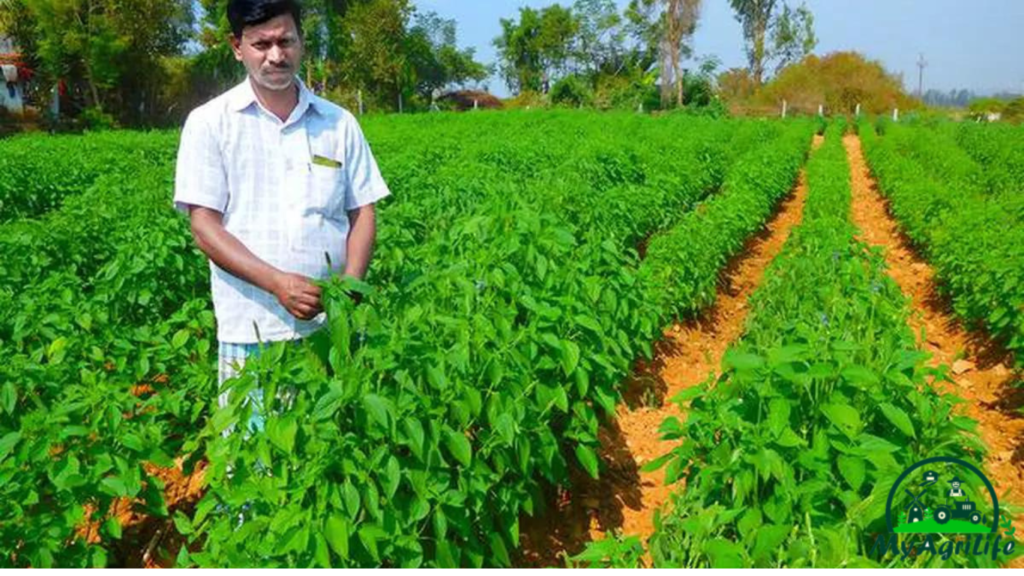
1.Clearing the land: The first step is to clear the land of any debris, weeds, or vegetation that can hinder the growth of chia plants.
2.Plowing: Plowing is done to loosen the soil and prepare it for planting. It also helps in the incorporation of organic matter into the soil.
3.Leveling: Leveling of the field is essential to ensure uniformity of water distribution during irrigation and to prevent waterlogging.
4.Soil testing: It is crucial to test the soil to determine its nutrient status and pH level. Based on the test results, appropriate fertilizers and soil amendments can be added to improve soil health.
5.Adding organic matter: Organic matter such as compost or manure can be added to the soil to improve its structure, water holding capacity, and nutrient content.
6.Irrigation: Adequate water supply is essential for chia cultivation. The land should be irrigated before planting to ensure that the soil is moist and ready for seed germination.
7.Seedbed preparation: The seedbed should be prepared by creating furrows or ridges to facilitate planting.
In summary, the land preparation for chia cultivation involves clearing the land, plowing, leveling, soil testing, adding organic matter, irrigation, and seedbed preparation. Soil health can be improved by adding organic matter, maintaining appropriate nutrient levels, and ensuring adequate water supply.
Crop Spray & Fertilizer Specification Chia Seed
Crop spraying and fertilization are important aspects of chia seed cultivation to ensure healthy plant growth and high yields. The following are some specifications for crop spray and fertilizers for chia seed cultivation:
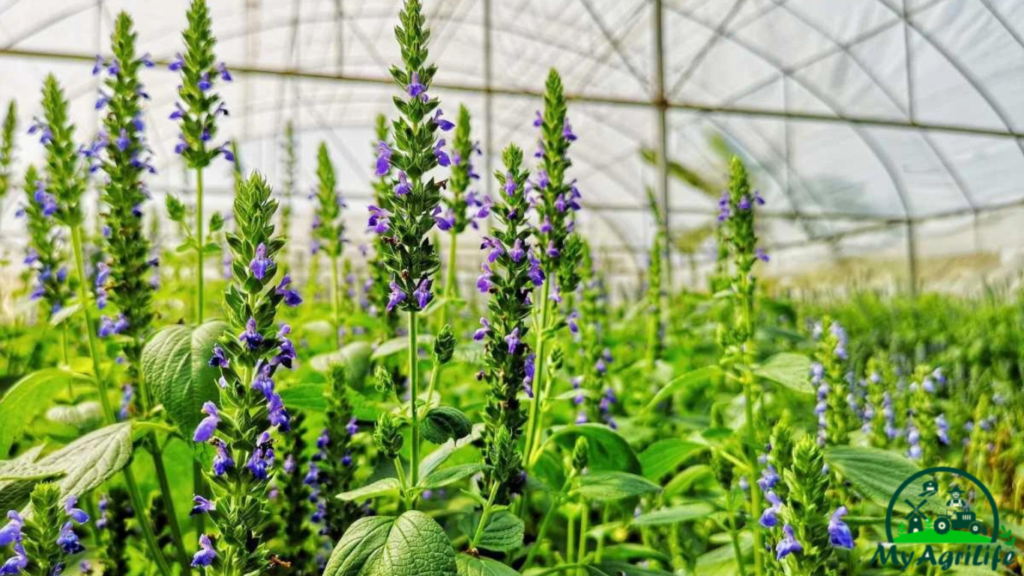
Crop Spray:
1.It is recommended to use natural, organic pesticides to avoid chemical residue in the seeds.
2.Neem oil, garlic oil, and pepper extracts can be used to control pests and diseases.
3.Spraying can be done during the early morning or late evening hours to avoid loss of spray due to high temperatures and wind.
Fertilizer:
1.Chia plants require a balanced supply of nitrogen, phosphorus, and potassium for healthy growth.
2.A soil test can help to determine the nutrient requirements of the soil and help to choose the appropriate fertilizer.
3.A balanced fertilizer such as 10-10-10 or 20-20-20 can be used as per the recommendations of the soil test.
4.Organic fertilizers such as compost or manure can be used to provide additional nutrients and improve soil health.
It is important to follow the recommended application rates and schedules for crop spray and fertilizer. Overuse of fertilizers can lead to soil pollution and damage to the environment. It is also important to take precautions while handling crop sprays and fertilizers to avoid personal harm.
Weeding & Irrigation Chia Seed
Weeding and irrigation are crucial for the successful cultivation of chia seeds. Here are some specifications for weeding and irrigation:
Weeding:
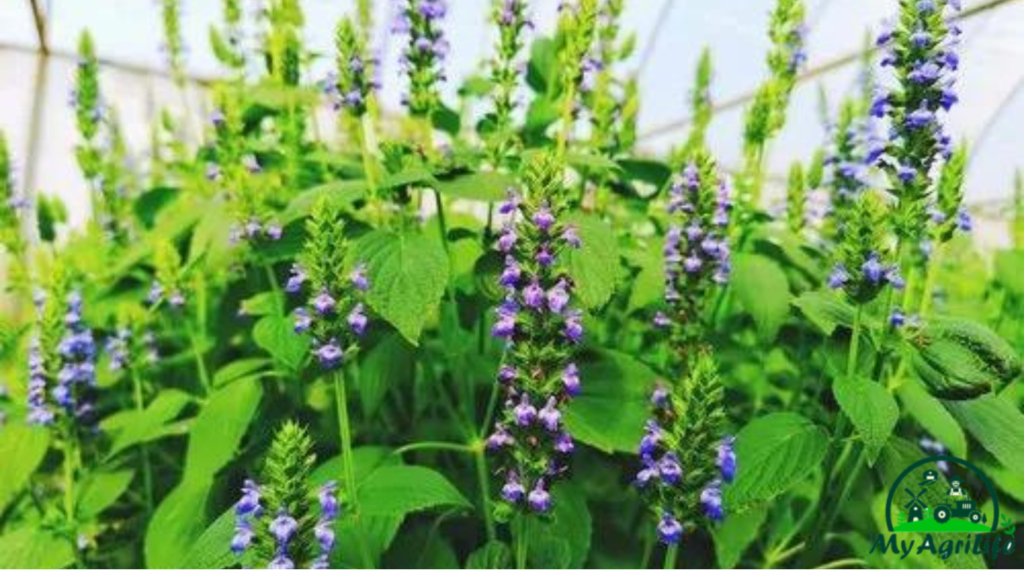
1.Weeding should be done regularly to control weeds that can compete for nutrients, water, and sunlight with chia plants.
2.Hand weeding can be done in small fields, whereas mechanical weeding can be done in large fields using machines.
3.Mulching can be done to suppress weeds and to maintain soil moisture.
Irrigation:
1.Chia seeds require a consistent supply of moisture for healthy growth.
2.Depending on the climate and soil conditions, irrigation can be done every 2-3 weeks or as needed.
3.The amount of water required depends on the growth stage of the plants and the soil moisture content.
4.Over-irrigation can lead to waterlogging and root rot, whereas under-irrigation can lead to stunted growth and reduced yields.
5.Drip irrigation or furrow irrigation can be used to minimize water wastage and to provide water directly to the roots of the plants.
It is important to maintain an appropriate balance between weeding and irrigation for optimal growth and yield of chia plants. Care should be taken not to damage the plants during weeding or to overwater them during irrigation.
Harvesting & Storage Chia Seed
Harvesting and storage are critical steps in chia seed cultivation to ensure high-quality seeds. Here are some specifications for harvesting and storage of chia seeds:
Harvesting:
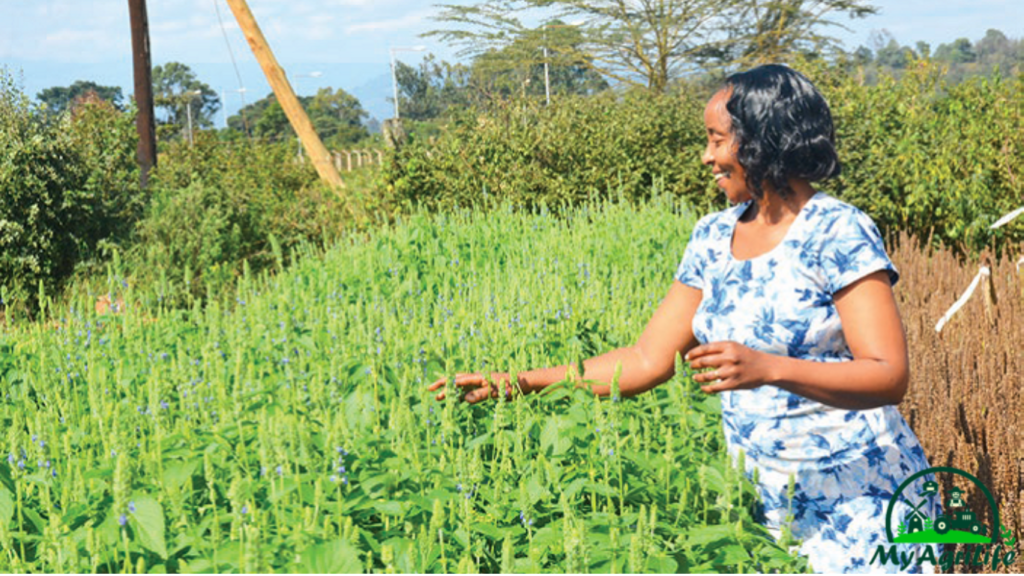
1.Chia plants can be harvested when the flower heads dry out and turn brown.
2.The seed heads can be harvested by cutting the stalks or by gently pulling them by hand.
3.The harvested seed heads can be left to dry in the field or in a well-ventilated area until the seeds separate easily from the seed heads.
Storage:
1.Chia seeds can be stored in a cool, dry place to prevent moisture and mold growth.
2.The seeds can be stored in airtight containers to prevent exposure to air and moisture.
3.It is recommended to store the seeds in a dark place to prevent degradation of quality due to exposure to light.
4.The shelf life of chia seeds can be extended by storing them in the refrigerator or freezer.
5.It is important to keep the seeds away from strong-smelling foods as they can absorb odors easily.
Overall, harvesting and storage of chia seeds should be done with care to ensure that the seeds retain their nutritional value and quality. It is recommended to follow the best practices for harvesting and storage to maximize the shelf life of the seeds.
Conclusion
In conclusion, chia seeds are a nutrient-dense food that offers a range of health benefits. They are rich in fiber, protein, omega-3 fatty acids, and various minerals, and are also low in calories. Chia seeds can be consumed in various ways, such as adding them to smoothies, yogurt, oatmeal, or salads. They can also be used as a thickener in sauces and baked goods. Chia seeds are safe for most people to consume in moderation, and they are generally gluten-free, nut-free, and vegan, making them a great option for people with food allergies or dietary restrictions. When grown commercially, chia seeds require proper land preparation, soil health management, crop spray and fertilizer specification, weeding, irrigation, harvesting, and storage practices to ensure optimal yield and quality.








